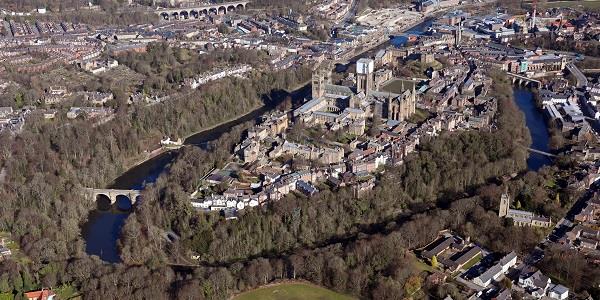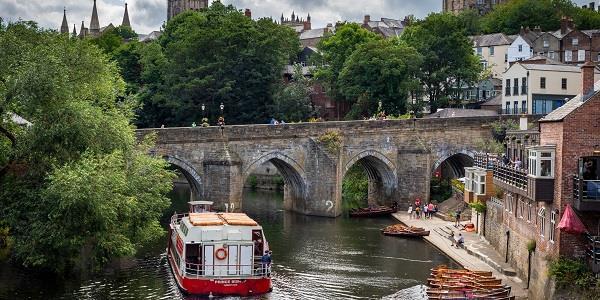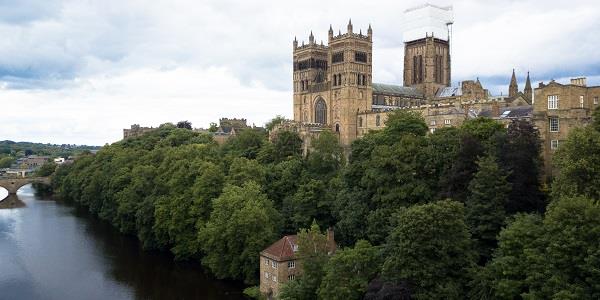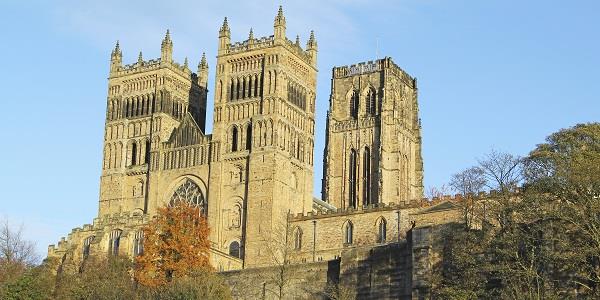
Northumberland. A county of dark skies; of an unspoiled, spectacular coastline studded with beautiful beaches; of ancient castles; of countryside; of history.
And of space. Northumberland’s natives are among the friendliest to be found anywhere in the UK – but if it’s solitude you crave, or just a chance to shut out the noise of modern life on our crowded island for a while, England’s most underpopulated county is the place to be.
But surely even the most ardent lovers of peace and quiet crave the urban from time to time. Newcastle, 46 miles or so to the south of Lucker, has enough vivacity and vibrancy to suit most tastes; but Durham, across the county border and 20-odd miles further on, is a jaw-dropping gem of a city.

Durham's pretty Market Square
Chances are you’ll pass close to the place on your way to or from Lucker, in which case take a very worthwhile detour; but if you originate from the west, or further north, of Lucker, then Durham is well worth the pilgrimage.
The word seems appropriate. The final resting place of both Saint Cuthbert and the Venerable Bede (and thus an important destination for the Christian faithful), Durham is an historic city. Lying on what is virtually an island (the Durham Peninsula) surrounded by an ‘incised meander’ of the River Wear (see pictures below and at top):
 medieval Durham is dominated by its 11th-Century Castle, built by the Normans to defend England against the Scots and the only Norman keep never to have suffered a breach.
medieval Durham is dominated by its 11th-Century Castle, built by the Normans to defend England against the Scots and the only Norman keep never to have suffered a breach.

Durham Castle
The Castle became the official residence of Durham’s ‘Prince-Bishops’ – a level of clerical hierarchy all its own which, along with the city’s geographical distance from Westminster, allowed holders of the office to wield extraordinary powers.
That their edicts and measures were (mostly) benign was perhaps testament to the Prince-Bishops’ faith and foresightedness. A humble dynasty, indeed: the last Prince-Bishop, William Van Mildert, left Durham Castle in 1832, moving to Auckland Castle in nearby Bishop Auckland so as to free up the city’s citadel for use by the then-nascent Durham University – the first university to be founded in England in 600 years and the third-oldest after Oxford and Cambridge. Though the Castle is in large part open to the public, it remains the home of Durham’s University College.
 Durham Cathedral. Note the 'wrapping' around the central tower…
Durham Cathedral. Note the 'wrapping' around the central tower…
I said that the Castle dominates the city – but maybe it’s a case of co-dominance. Because also gracing the skyline of the Durham Peninsula is the eponymous Norman Cathedral, wherein lie the remains of Saints Bede and Cuthbert and which, along with the Castle, enabled the city to gain Unesco World Heritage status in 1986. Durham Cathedral is regarded, quite simply, as one of the finest examples of Norman architecture in Europe; and the view from its central tower over the city and the surrounding county is simply superb.
And from later next year, visitors will be able to enjoy the view anew.
The tower was closed to the public in November 2015, to allow for £1.9m of repairs to masonry and lead roofing, and the installation of a visitor platform.
But the work is now substantially complete. As of 4th December 2018, the 216-foot tower is slowly being unwrapped – carefully stripped of its cladding and scaffolding to reveal the fruits of three years of hard and careful labour.
Following the removal of the plastic sheeting, the tower will undergo the final stages of refurbishment. This last effort will be in preparation for the grand re-opening of the tower and the re-instigation of public access, expected to be later in 2019.

…and unwrapped: the Cathedral's central tower in all its glory
“Our team of stonemasons have relished working on the tower project,” said Durham Cathedral clerk of works Scott Richardson, “knowing that the central part of Durham Cathedral and Durham city’s skyline is being conserved for future generations to enjoy.”
To reach Durham from Lucker, Simply follow the A1 and A1(M) due south. The city is well signposted, especially as you approach. The journey is about 65 miles, and will take 1¼ hours.

